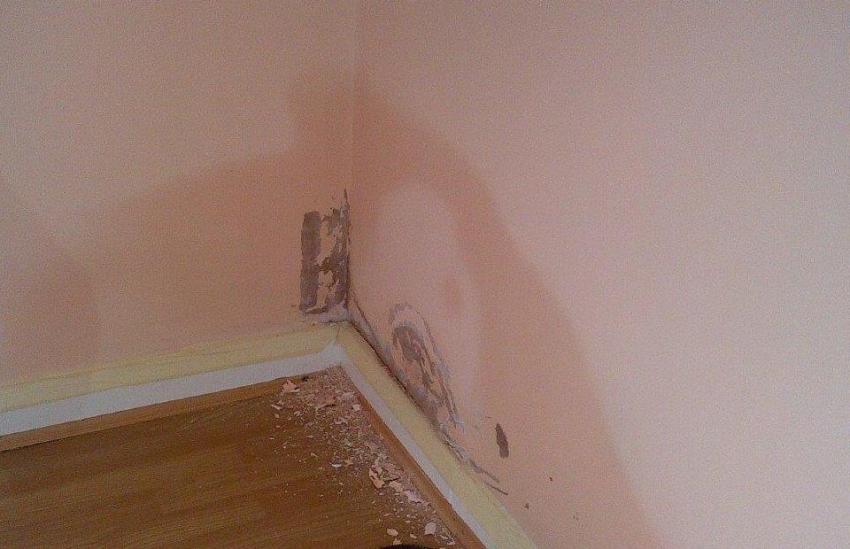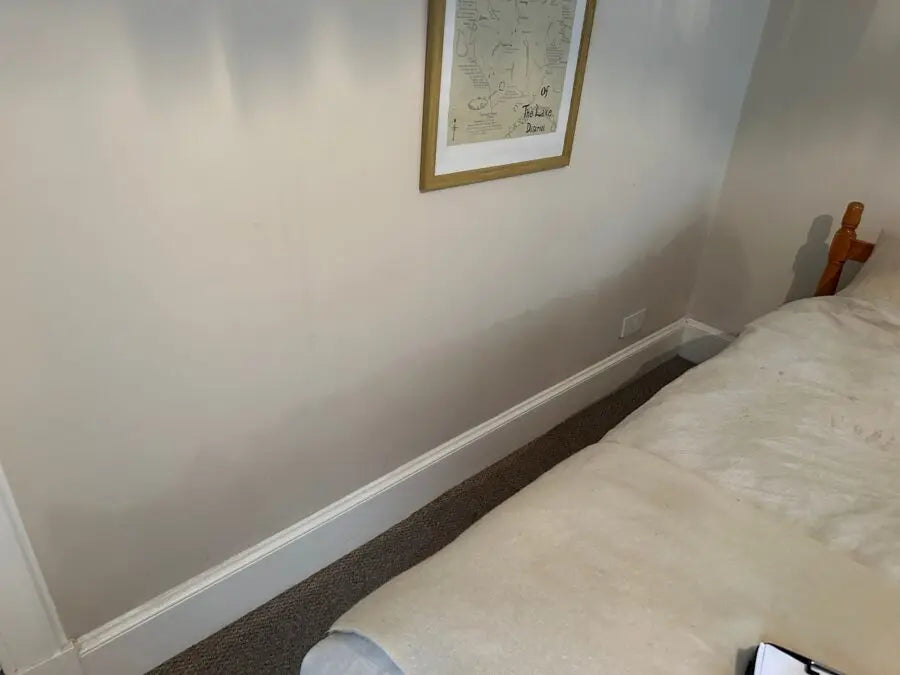About Rising Damp
Rising damp occurs when moisture from the ground is drawn upward through porous materials (e.g., brick, mortar, stone) via capillary action, similar to how plants absorb water through roots.
- Typically affects walls up to 700–1000mm above ground level
Causes visible damage like:
- Blistered paint and deteriorated plaster
- Weakened structural integrity of masonry
- Increased energy costs due to poor insulation
- Health risks from excess moisture
Salt Damp is a more severe form of rising damp, especially common in regions with saline soil. As the moisture rises, it brings salts into the walls. These salts:
- Absorb moisture from the air, leading to further damage
- Crystallise and cause crumbling mortar and brickwork
- Leave white salt stains on wall surfaces
Both conditions can be treated with Dryzone and Dryrod systems, providing a long-term solution to protect your property.
Examples of Rising Damp
Rising Damp Treatments
-
Mechanical Treatment
Removes 2/3 of the wall bricks, inserts new plastic sheeting, and replaces bricks.
Pros:
- Efficient.
Cons:
- Can compromise structural integrity
- Labour-intensive
- Expensive
-
Chemical Treatment Using Dryzone
Chemical treatment with Dryzone involves introducing damp-proofing agents into the wall via pre-drilled holes using a special nozzle attached to a standard 600ml barrel gun.
Pros:
- Efficient
- No mess or smell
- Faster application
- Safe for asthma sufferers,
- pet-friendly
- BBA approved.
Cons:
- Risk of wastage from overfilling.
-
Chemical Treatment Using Dryrod
Dryrod is the latest solution for rising damp, offering a faster, cleaner, and more efficient treatment.
Pros:
- No mess or smell
- No risk of spillage
- Works on walls saturated up to 95% saturation
- Pet and asthma-friendly
- BBA approved
- Fast and efficient
- Permanent results
Cons:
- None apparent
Other Causes of Dampness
Falling Damp
Falling damp is caused by water entering from the top of the building, often during heavy rain.
Caused by:
- Broken roof tiles
- Blocked gutters or downpipes
- Cracked render or aged masonry
Look for:
- Watermarks near the ceiling or roofline
- Damp patches that appear after rain
- No salt deposits, unlike rising salt damp
Condensation
Condensation is a very common cause of damp, especially in colder climates. It happens when warm, moist air hits a cool surface, turning into liquid water.
- Often appears higher than 1 metre on walls—unlike rising damp
Signs include:
- Fogged-up windows
- Damp high up on walls
- Musty smells
Risks of Untreated Condensation:
- Promotes mould growth on walls, clothes, and furniture
- Increases risk of respiratory problems
- Can affect roof spaces and subfloors, damaging timbers
May lead to dry rot, wet rot, and termite infestations.
Mould
Mould is not a sign of rising damp—it is usually caused by long-term condensation.
- Mould spores are airborne and settle on constantly damp surfaces
Once established, it spreads rapidly and:
- Looks unsightly
- Releases spores into the air
- Can trigger asthma and other health issues
Treatment & Prevention:
- Use chemical mould removers (vary in effectiveness)
- Best solution: Reduce condensation and moisture levels in the room



